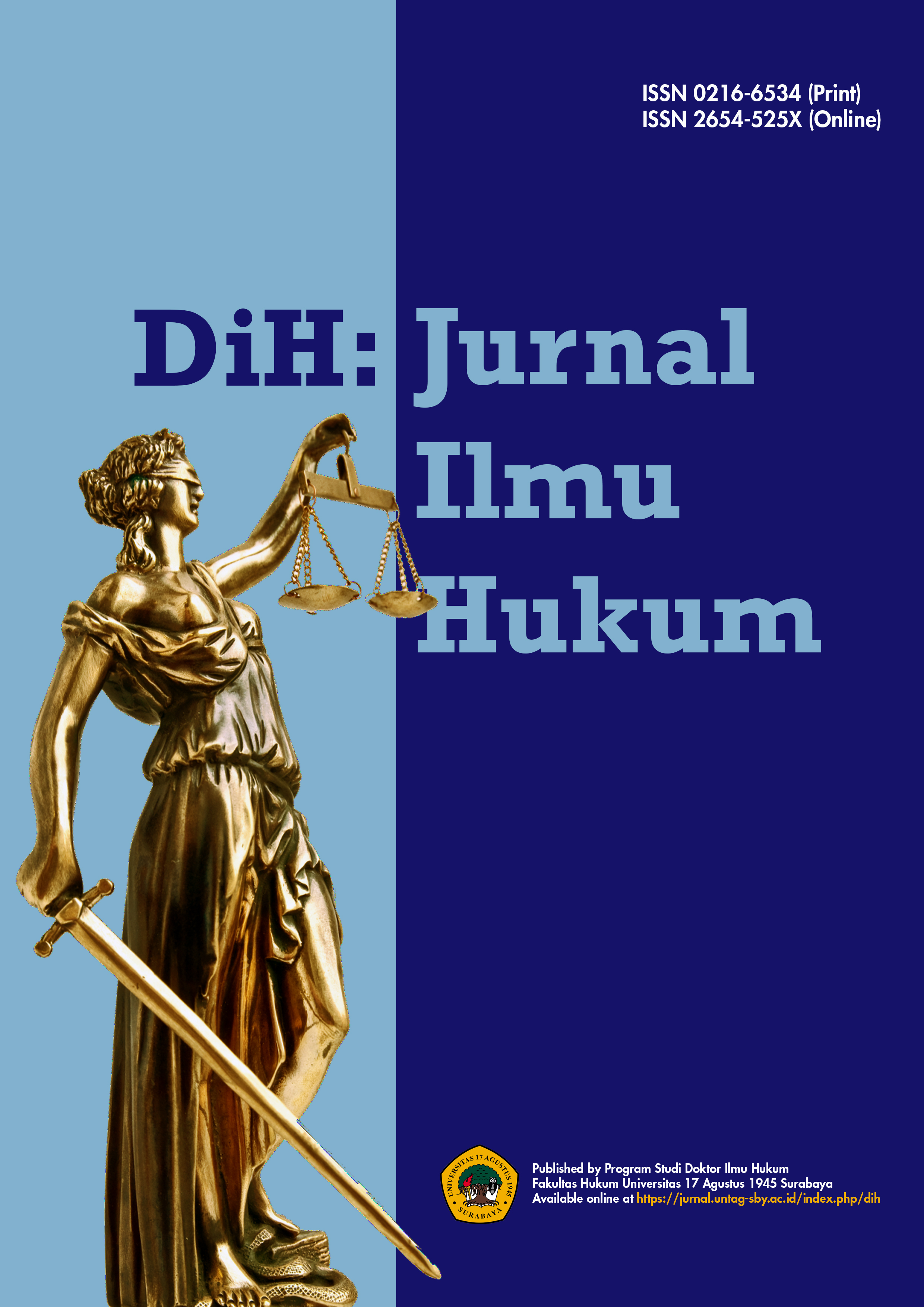A Law Enforcement Of Motor Vehicle Theft In The Jurisdiction Of Papua POLDA
DOI:
https://doi.org/10.30996/dih.v20i1.9510Abstract
Motor vehicle theft crimes in Papua will increase in 2021 and 2022, although in 2023 there will be a decline, these figures each show high numbers, this also contributes to the high number of crime cases in Papua and makes Papua the number one crime-prone country in Indonesia. This research focuses on iden-tifying law enforcement efforts in terms of Article 362 KUHP and identifying the factors that cause these crimes, analyzed from three criminal theories as well as Neo Classical criminal theory, environmental crime theory and sub-structural delinquency theory. Researchers used Normative Juridical research methods which were carried out by analyzing Article 362 KUHP regarding acts of theft. Meanwhile, the empirical approach was carried out by inter-viewing sources. As a result, action against criminals through the provisions of Article 362 KUHP has not been optimal because this criminal act of theft is generally recidivist and knows other perpetrators, so Article 362 KUHP does not provide a deterrent effect. Therefore, referring to article 5 of Law No.1/1946 concerning the KUHP, the punishment in article 362 KUHP can be replaced with the provisions of Article 477 paragraph (1) and paragraph (2) of Law No.1/2023 that the perpetrator of theft is threatened with a maximum prison sentence of 7 years, which if committed using a fake key as in article letter (f) and in groups as in letter (g) can be subject to a penalty of 9 years in prison. The factors causing the crime of motor vehicle theft are in accordance with neo-classical theory, environmental theory and substructural delinquency theory, where the factors causing the crime are weak law enforcement, techno-logical developments such as cellphones, family and social environmental factors and the geographical conditions of the perpetrator.
Downloads
Downloads
Published
Issue
Section
License
Authors who publish with DiH: Jurnal Ilmu Hukum agree to the following terms:
- Authors transfer the copyright and grant the journal right of first publication with the work simultaneously licensed under a CC BY-SA 4.0 that allows others to share the work with an acknowledgement of the work's authorship and initial publication in this journal.
- Authors are able to enter into separate, additional contractual arrangements for the non-exclusive distribution of the journal's published version of the work (e.g., post it to an institutional repository or publish it in a book), with an acknowledgement of its initial publication in this journal.
- Authors are permitted and encouraged to post their work online (e.g., in institutional repositories or on their website) prior to and during the submission process, as it can lead to productive exchanges, as well as earlier and greater citation of published work (See The Effect of Open Access)



